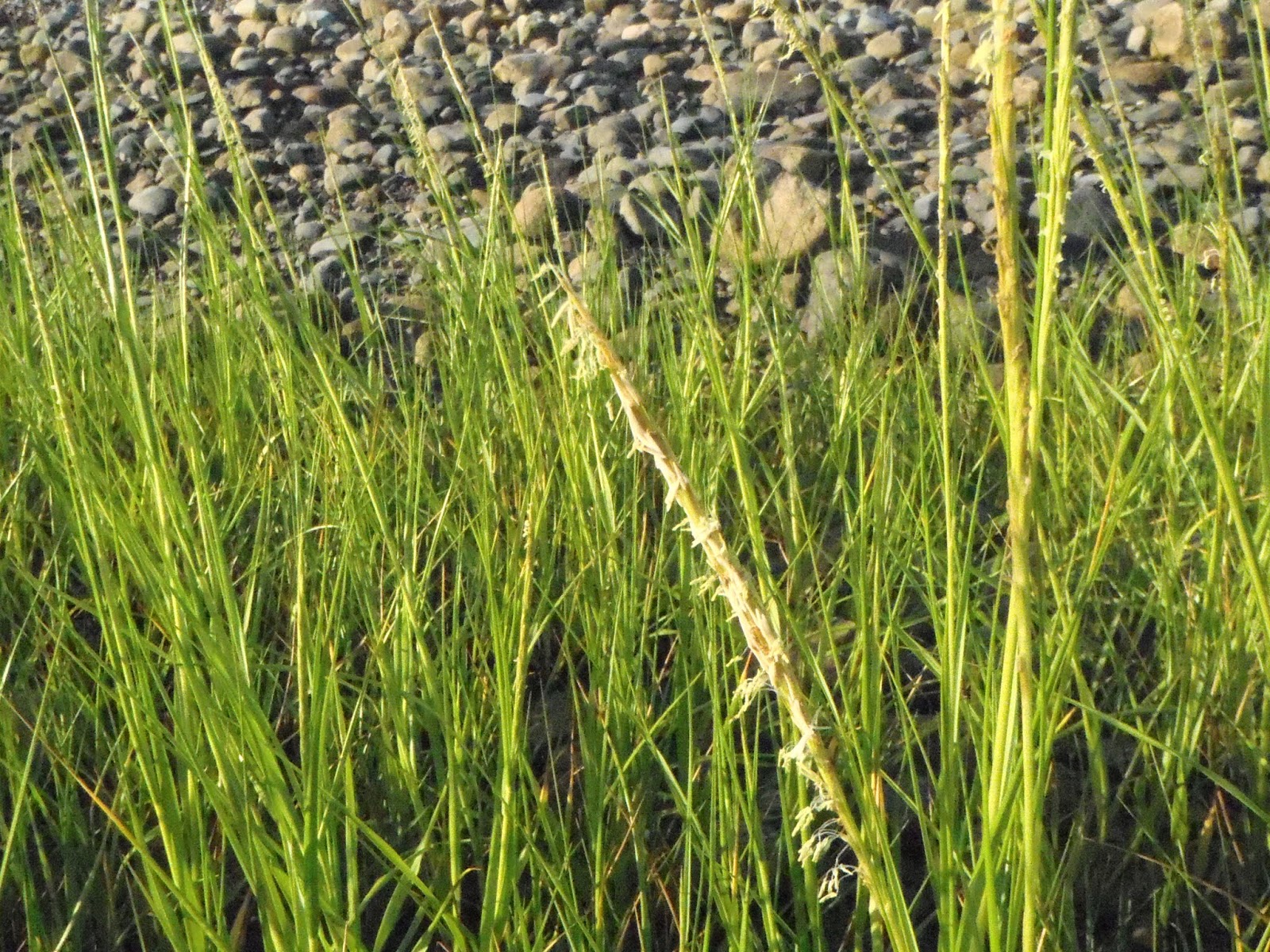I sometimes imagine that I know
what grass looks like, until I consider such grasses as maize (corn), or the
forty-foot-tall bamboo thicket that my father-in-law cherishes in New
Orleans. But more amazing than these, if
not so conspicuous, is one I saw on a recent trip.
My son and I, having sailed from
Plymouth, anchored our sailboat near shore in Scituate Harbor near high
tide. When we woke next morning, our
boat was high and dry in the intertidal zone, and nearby was a healthy stand of
grass that had been completely submerged when we arrived. When I reflected on this as my coffee brewed,
I was a little shocked. To understand
why, you have to think a little about what a hostile environment salt water is
for land plants--and land animals, as well.
Our boat grounded beside Mystery Grass.
This very health stand of grass was completely submerged at high tide.
What would happen to you if you
were abandoned in the sea, but managed to avoid drowning? "Water, water everywhere but not a drop
to drink," as Coleridge's Rime of the Ancient Mariner has it: because sea
water is saltier than your own blood or body fluids, to drink only seawater is
certain (if slow) death, as your body actually dehydrates, since water will
diffuse out of your tissues and into the seawater. To survive, your body would need a way to
extract fresh water from seawater. Even
with technology, that's requires a lot of energy. In case of emergencies, ocean-crossing sailors
carry " water makers" in which water is pumped laboriously through a
special membrane at pressures of about sixty-eight atmospheres.
Unlike you, a plant makes its own
food by photosynthesis using light energy.
But this advantage comes with the drawbacks of the rooted lifestyle of
nearly all land plants: breathing. BUT Plants
need oxygen for the same reason do: to release energy from food by cellular
respiration. (Plants make their own
food, but afterwards use that food for energy the same way you do.) Respiration, summarized, looks a lot like
photosynthesis in reverse:
Photosynthesis: 6H2O
+ 6CO2 --> C6H12O6 + 6O2
Respiration: C6H12O6
+ 6O2 --> 6H2O + 6CO2
In each, energy is being
transferred. In photosynthesis, light
energy becomes "stored" in the chemical bonds of the sugar molecule (C6H12O6),
while in respiration, sugar energy is transferred to ATP, a sort of "universal
battery" for all living things. ATP
provides you and the African violet on your windowsill the energy to live at
this moment.
You, a complex animal, inhale oxygen
and distribute it with your lungs and circulatory system all over your
body. Plants, simpler, generally take a
simpler route: all the plant parts, from leaves to stems to roots, absorb the
oxygen through their surfaces. This is
enough for such low-energy organisms.
Here's the problem. Gasses such as oxygen and carbon dioxide
diffuse through the air-filled pore spaces in soil pretty well, but not if that
soil is waterlogged. Waterlogged soil is
nearly impervious to oxygen. That is the
main reason why most plants cannot live in waterlogged soil for long.
Spartina alterniflora with stamens dangling from its flowers.
What was this mystery plant,
which can thrive rooted in anoxic mud and submerged in seawater twice a day? It happened to be in flower when we visited, making
the identification straight-forward: Spartina
alterniflora or saltmarsh cordgrass, well-known foundational plant in all
salt marshes in this part of the world, the familiar tall grass around every
salt marsh. I learned something new finding
it in a place so completely submerged at high tide.
How does Spartina solve these problems?
First, it "filters" the majority of the salt out of its roots as water enters cell membranes. Though the fresher water inside the plant would tend to diffuse back out into the seawater, it doesn't because evaporation from its leaves generates enough "transpirational pull" to keep water conming in at the roots. Salt that leaks in anyway is pumped out by "salt glands" on the aerial parts of the plant (which gather as tiny salt crystals visible on close
inspection of the leaves). In
a sense, Spartina has its own water maker. In
addition, the plant stems and roots are full of air passages--a tissue called aeremchyma. Oxygen from the air diffuses down the aeremchyma to the roots fast enough to enable these roots to do respiration.
Spartina is also able to spread
by underground stems, so that, once it is established, it does not need to set
seed to increase. In this way, much of
the Spartina in a typical salt marsh
may really be a clone of a single individual; kind of like a huge number of identical
twins. This is much commoner among
plants than among animals.
A final problem: being rooted is
the equivalent of standing in the intertidal zone in cement overshoes. Once the water is over your head, you drown. But Spartina's
oxygen needs are low enough that it can "hold its breath" while the
tide is high, and wait until air returns with the ebbing tide.




No comments:
Post a Comment